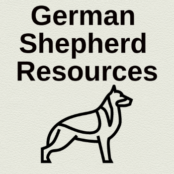When it comes to training your German Shepherd, the “Leave It” command is indispensable. This guide will show you everything you need to know to teach your German Shepherd this essential command.
Table of Contents
Introduction
The Importance of the “Leave It” Command for German Shepherds
Every German Shepherd owner knows that these dogs are intelligent and energetic. Because of this, proper training is crucial. One of the most vital commands you can teach your German Shepherd is “Leave It.” This command can stop your dog from picking up dangerous objects or getting into trouble.
Benefits of Mastering This Skill
Training your dog to “Leave It” is not just about avoiding trouble. It promotes discipline, strengthens your bond with your dog, and can make your life much easier. A well-trained German Shepherd is a joy to be around and the “Leave It” command is a key component of their obedience training.
Brief Overview of the Training Process
In this guide, we’ll take you through the entire process of teaching your German Shepherd the “Leave It” command. From understanding the basics to overcoming common challenges, you’ll have all the information you need to succeed.
Understanding the “Leave It” Command
Definition and Purpose
“Leave It” means that your dog should ignore whatever has caught their attention. This could be food, another animal, or an object on the ground. The goal is for your dog to disengage from the distraction and focus on you.
Situations Where “Leave It” Is Useful
There are countless scenarios where this command can be life-saving. Imagine your dog encountering something harmful during a walk or grabbing something off the kitchen counter. The ability to command them to “Leave It” ensures their safety and your peace of mind.
With my German Shepherd dog Japer, the “leave it” command is particularly useful around my other small dogs. Jasper is a dominate natured dog and my Papillion are 7 and 10 pounds to his 80 pounds. Using “leave it” has allowed my smaller dogs to feel safe and given Jasper needed boundaries. Just keep in mind, it’s very important you follow through.
How It Differs from Other Commands (e.g., “Drop It”)
While “Leave It” means not to touch an item at all, “Drop It” is used when the dog has already picked something up and you want them to release it. Both commands are important, but “Leave It” often serves as a preventive measure.
Preparing for Training
Essential Supplies
Before starting, gather the necessary supplies. This will make the training process smoother and more effective.
High-Value Treats
Use treats that your dog finds irresistible. These will be crucial in maintaining their interest and rewarding good behavior.
Regular Treats
While high-value treats are for special moments, regular treats will help keep your dog motivated throughout the training sessions.
Leash and Collar
A good leash and collar can help control your dog during training, especially when introducing distractions.
Choosing the Right Training Environment
Pick a quiet, distraction-free environment for initial training sessions. This helps your dog focus on learning the command without external interruptions.
Setting Realistic Expectations
Understand that training takes time and patience. Set achievable goals for each session and celebrate small victories.
Step-by-Step Training Process for “Leave It” Command
Phase 1: Introduction to “Leave It”
The Closed Fist Method
Start by holding a treat in your closed fist. Allow your dog to sniff your hand but do not give them the treat. When they stop sniffing, say “Leave It” and reward them with a different treat from your other hand.
Using Verbal Cues
Consistently use the verbal cue “Leave It” during this phase. This helps your dog associate the words with the desired action.
Timing and Rewards
Timing is critical. Reward your dog immediately when they correctly respond to “Leave It.” This reinforces the behavior you want to see.
Phase 2: Adding Distractions
Using Low-Value Items
Gradually introduce low-value items that your dog finds less tempting. This step helps your dog learn to “Leave It” in various situations.
Increasing Difficulty Gradually
Once your dog is comfortable with low-value items, start using more tempting distractions. The key is to increase difficulty slowly so your dog can succeed at each step.
Practicing with Various Objects
Practice the command with different objects and in different settings. This ensures your dog understands “Leave It” regardless of the context.
Phase 3: Distance and Duration
Increasing Distance Between Dog and Object
Start increasing the distance between your dog and the object they need to leave. This teaches them to obey the command even when the temptation is further away.
Extending the Duration of the “Leave It” Command
Gradually extend the time your dog has to leave the object before receiving a reward. This builds their self-control and patience.
Incorporating Movement
Add movement to the training by walking past the object and commanding “Leave It.” This simulates real-world scenarios where your dog will need to obey the command while on the move.
Common Challenges and Solutions with “Leave It” Command
German Shepherd Stubbornness
German Shepherds are known for their strong will. Stay patient and consistent with your training. Break sessions into shorter durations if necessary.
High Prey Drive Interference
Some German Shepherds have a high prey drive, making it challenging to get them to “Leave It.” Use higher-value treats and practice in controlled environments until they get the hang of it.
Inconsistent Responses
Inconsistencies in training can confuse your dog. Ensure everyone in your household uses the same commands and rewards system.
Troubleshooting Tips
If you’re struggling, consider consulting a professional trainer. Sometimes a fresh perspective can make all the difference. Because of Jasper’s high prey drive which is just a genetic heritage of the German Shepherd, we needed a bit more help and our trainer used a stim collar.
As he explained the collar is not ever to be used as punishment, rather as direction. I can only speak for my own experience, it was a life saver for us and at this point we no longer even need it in most situations.
Advanced “Leave It” Training
Off-Leash Practice
Once your dog has mastered the command on a leash, practice off-leash in a safe, enclosed area. This step is crucial for real-world applications.
Real-World Applications
Use the command in various real-world situations, like at the park or during walks. This reinforces the training in diverse contexts.
Combining with Other Commands
Integrate “Leave It” with other commands such as “Sit” and “Stay.” This adds complexity to the training and keeps your dog engaged.
Maintaining and Reinforcing the Skill
Regular Practice Sessions
Consistency is key. Regularly practice the “Leave It” command to keep it fresh in your dog’s mind.
Incorporating “Leave It” into Daily Routines
Use the command in everyday situations. This makes it a natural part of your dog’s behavior.
Refresher Training Techniques
Occasionally revisit basic training steps to reinforce the command. This ensures your dog remains sharp and responsive.
Safety Considerations
When Not to Use “Leave It”
Avoid using the command in situations where immediate action is necessary. In emergencies, it’s better to use a more urgent command.
Alternatives for Dangerous Situations
If your dog tends to get into dangerous situations, consider using a more forceful command or removing them from the environment entirely.
Balancing Obedience and Natural Instincts
While training is important, remember that dogs have natural instincts. Allow them some freedom to explore, but always prioritize safety.
Conclusion
Recap of Key Points
Teaching your German Shepherd the “Leave It” command is crucial for their safety and your peace of mind. The process involves understanding the command, preparing for training, and practicing consistently.
Encouragement for Consistent Training
Consistency and patience are the keys to successful training. Celebrate small victories and remain patient through setbacks. German Shepherds need to train daily. They need a “job” to do. Training and dog sports give your German shepherd a “job.”
Long-Term Benefits for German Shepherd and Owner
A well-trained German Shepherd is a joy to be around. The “Leave It” command will enhance your bond and make your dog a well-behaved member of your family.
FAQs
How Long Does It Take to Teach a German Shepherd “Leave It”?
The time it takes can vary, but most dogs start to understand the command within a few weeks of consistent training.
Can Older German Shepherds Learn This Command?
Absolutely! While puppies may pick it up faster, older dogs can learn the “Leave It” command with patience and consistency.
What if My German Shepherd Doesn’t Respond to High-Value Treats?
If your dog isn’t motivated by treats, try using toys or other forms of positive reinforcement.
How Often Should I Practice the “Leave It” Command?
Practice the command daily, especially in the early stages of training. Once your dog becomes proficient, you can practice a few times a week.
Can “Leave It” Help with Resource Guarding Issues?
Yes, teaching your dog to “Leave It” can be a valuable tool in managing resource guarding and other behavioral issues.
Teaching your German Shepherd the “Leave It” command is a rewarding endeavor. It not only enhances their safety but also strengthens your bond. Happy training!

